Coneflower Care: How to Grow & Care for Coneflowers
Written by Iris
Dec 13 2022
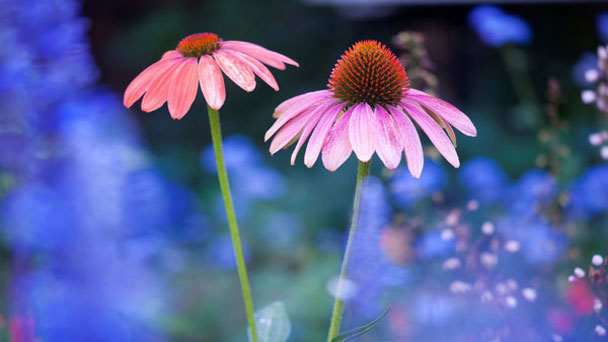
Here are important tips on Coneflower (Echinacea) plant growing and plant care. Coneflower is a pine cone genus native to north America and southern Canada with eight species and several variants. Coneflower has high stems and single flowers which is always pink or purple, and it looks like black-hearted golden chrysanthemum, and the central ball fruit is usually purple-brown. The fruit is actually a seed on the echinacea and is very large. It has spikes that look like hard combs or angry hedgehogs. This is actually the reason why echinacea is named: echinos mean Greek hedgehogs.
3.jpg)
Note: Coneflowers started from seed may take 2 to 3 years before producing blooms.4.jpg)
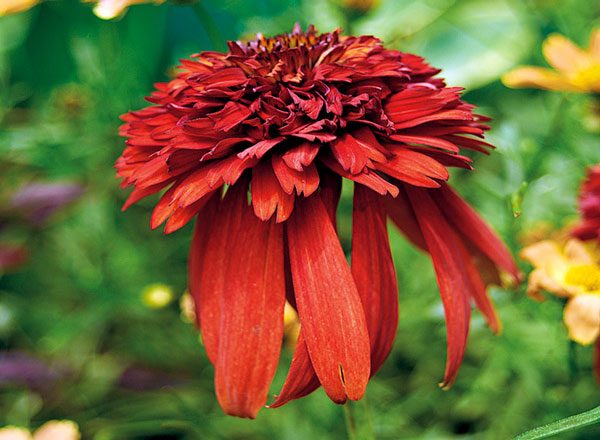
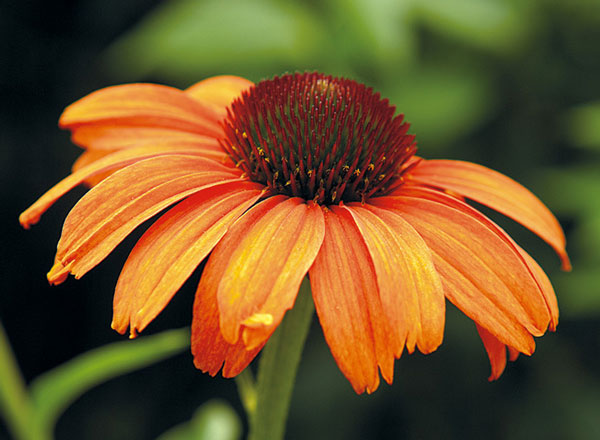
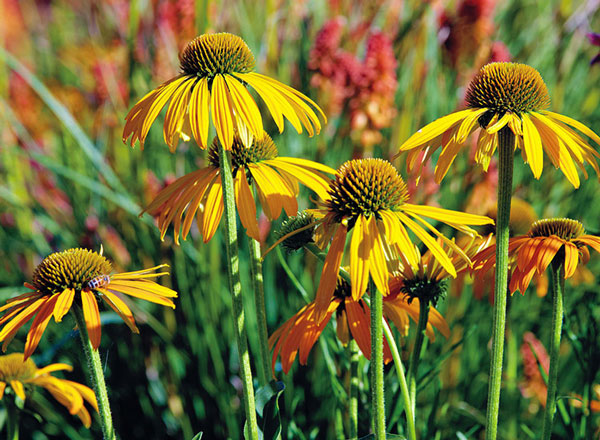
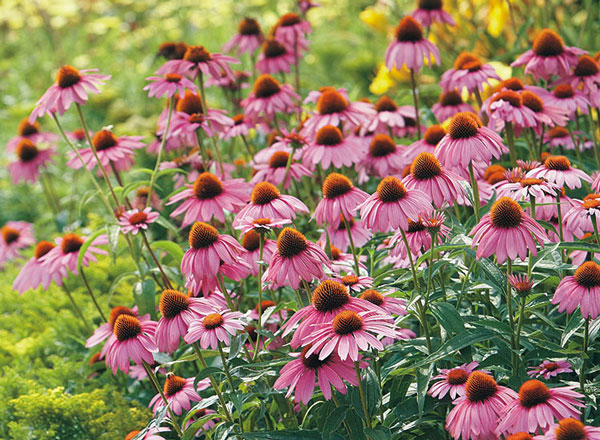
Where to Grow ConeflowerWhen to Grow Coneflower (Echinacea)How to Grow Coneflower (Echinacea)Coneflower Seed PropagationConeflower Division PropagationGrow Coneflower in a potHow to Care for Coneflower (Echinacea)Coneflower Care - PruningConeflower Care - SoilConeflower Care - FertilizerConeflower Care - WateringConeflower Care - PropagationConeflower Care - Diseases & PestsConeflower varieties‘Doppelganger’coneflower (Echinacea purpurea)‘Hot Papaya’ coneflower (Echinacea purpurea )‘White Swan’ coneflower (Echinacea purpurea)‘Tiki Torch' coneflower (Echinacea purpurea)‘Now Cheesier’ coneflower (Echinacea purpurea)‘Magnus’ coneflower (Echinacea purpurea)
Where to Grow Coneflower
Coneflowers prefer well-drained soil and full sun for best bloom. Choose a location where the coneflowers won't get shaded out nor shade out others. They may reach between 2 and 4 feet in height, depending on the variety. Coneflowers are very tolerant of poor soil conditions, but they perform best in soil that's rich so mix in the organic matter if needed. Meanwhile, Coneflowers are drought tolerant. Loosen the soil in your garden using a garden fork or tiller to 12 to 15 inches deep, then mix in a 2- to 4-inch layer of compost. (Learn more about preparing soil for planting.)3.jpg)
When to Grow Coneflower (Echinacea)
More commonly, coneflowers are bought as small plants with blooms already on the way. These should be planted in spring or early summer. Coneflowers can be started from seed in spring indoors (about a month before the last spring frost date) or outdoors (when the soil temperature has reached at least 65°F/18°C).Note: Coneflowers started from seed may take 2 to 3 years before producing blooms.
4.jpg)
How to Grow Coneflower (Echinacea)
Coneflower (Echinacea) plants grow best in poor or lean soil. Rich or heavily amended soil may result in lush foliage and poor flowering. When planting Coneflower, locate them in a full sun area. Full sun is defined as at least six hours of sun each day. In more southern areas, morning sun may facilitate the best performance, with late afternoon shade protecting the plants from burning. Coneflower plants may be started from seed or root division:Coneflower Seed Propagation
If you wish to collect seeds for next year’s crop of Coneflower plants, do so before the birds have eaten all the seeds. Place a brown paper bag over the seed head, turn right side up, and let seeds drop into the bag. Professional growers believe stratification (chilling) of the seeds for a few weeks, after they are planted in moist soil, produces a more abundant bloom when growing Coneflower. Those in areas where temperatures remain warm year long may want to try this technique. Alternately, planting Coneflower seeds in autumn, in areas with cold winters, allows the seeds to chill naturally.Coneflower Division Propagation
Coneflower (Echinacea) plants may be started from root division in fall. Only plants that have been in the ground for three years or longer should be divided. Younger Coneflower plants may not have developed a root system that is extensive enough for division. Root division should be limited to every three to four years. Growing Coneflower from seeds is easy enough for the beginning gardener, while long-time gardeners delight in the ease of how to care for Coneflowers.Grow Coneflower in a pot
We tend to grow coneflowers in the ground as perennial plants, but you can certainly grow them in pots if the containers are deep enough for the plant's taproot (at least 2- or 3-gallon pots).- Ensure there are holes in the bottom of the pot. Put a thin layer of crushed gravel at the bottom of the pot for drainage.
- Fill container halfway with potting mix. Tamp down. Plant the root ball an inch below the rim of the container, spreading out the roots and adding soil slowly until even with top of root ball, tamping soil lightly along the way. Water deeply.
- Keep pots in partial shade for two or three days and then move to a site that receives full morning sun and partial afternoon shade.
- Always water deeply when the soil is dry to touch.
- Fertilize pots every couple of weeks with a water-soluble 10-10-10 fertilizer.
- Deadhead for continued bloom, clipping right below base of the flower stem. Do not water leaves from above, as this can encourage fungal disease on leaves. Instead, water at soil level. Use an insecticidal soap or neem oil solution spray if you see any aphids or pests.
How to Care for Coneflower (Echinacea)
These easy-care coneflower Daisy-Like perennials require only the basics: regular watering of about an inch per week, a light layer of compost added in the spring, and to be cut back in fall, and even that’s optional if you prefer to leave the seed heads.Coneflower Care - Pruning
Though deadheading is a common garden practice to encourage repeat blooming, many varieties these days are flower machines and will keep producing without snipping off spent blooms. That way you can leave them be, guaranteeing food for another beloved category of wildlife—birds, particularly small songbirds like goldfinches, which are crazy about the seeds. Flowers appearing post-deadheading can be smaller and less satisfying, so why not just leave the first, bigger flowers to go to seed and give the birds a feast? Once your coneflower has finished blooming, it can be cut down to ground level to over-winter. Or, if you prefer to leave the dried seed heads, it can be cut down in early spring.Coneflower Care - Soil
Coneflower prefers average, well-drained soil.Coneflower Care - Fertilizer
Work a bit of compost in around the plants if flowers are small or poorly developed. Be careful, over-feeding can lead to an abundance of foliage and a lack of flowers.Coneflower Care - Watering
Tolerant of drought, but does best in average, dry to medium moisture. Water regularly, but let soil dry out in between. Coneflowers need at least an inch of water weekly.Coneflower Care - Propagation
Divide clumps when crowded, about every 4 years. If spent flowers are left intact, they will reseed with little effort on your part. Deadheading can help to control this if they are getting out of hand. Some gardeners choose a middle ground and collect the seeds and plant them in carefully selected spots for the following season.Coneflower Care - Diseases & Pests
One problem worth noting in Echinacea is “aster yellows,” a virus-like disease caused by a phytoplasma. Symptoms are deformed flowers, sometimes with weird tufts in the cones, and yellow leaves with green veins. The organism is spread by sap-sucking insects like leafhoppers (and can also be spread on pruners during deadheading). There's no cure, so once you notice a plant is infected, dig it up immediately and throw it away. They can also be bothered by leaf miners, powdery mildew, bacterial spots, gray mold, vine weevils, and Japanese beetles.Coneflower varieties
In the past, the only colors for coneflowers were pink-purple or soft white. And these are definitely pretty — one glance shows you how gorgeous old-fashioned coneflowers can look in a flower border. But over the last several years, plant breeders have released some unusual varieties. Take a look at some varieties available in the gallery below.‘Doppelganger’coneflower (Echinacea purpurea)
Blooms Two tiers of pink petals; the first year or two, most or even all of the flowers may be ordinary, single coneflowers, but once the plant is established, it’ll be covered with double blooms Light Full sun to part shade Size 1 to 2 ft. tall, 2 to 3 ft. wide Hardiness Cold hardy in USDA zones 3 to 9
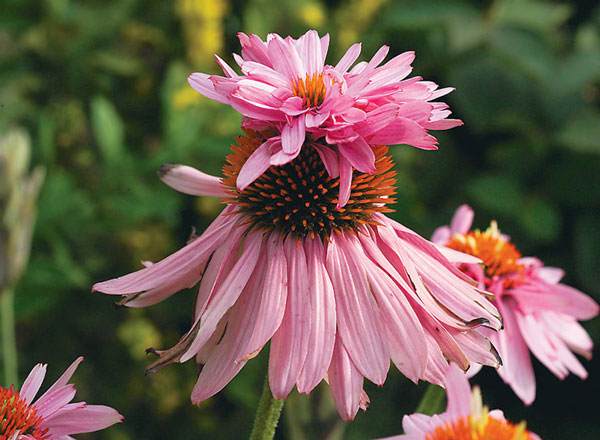
‘Hot Papaya’ coneflower (Echinacea purpurea )
Blooms Bright red double flowers really pack a punch Light Full sun to part shade Size 32 to 36 in. tall, 18 to 24 in. wide Hardiness Cold-hardy in USDA zones 3 to 9
‘White Swan’ coneflower (Echinacea purpurea)
Blooms Soft white flowers Light Full sun to part shade Size 2 to 3 ft. tall, 1 to 2 ft. wide Hardiness Cold-hardy in USDA zones 3 to 9
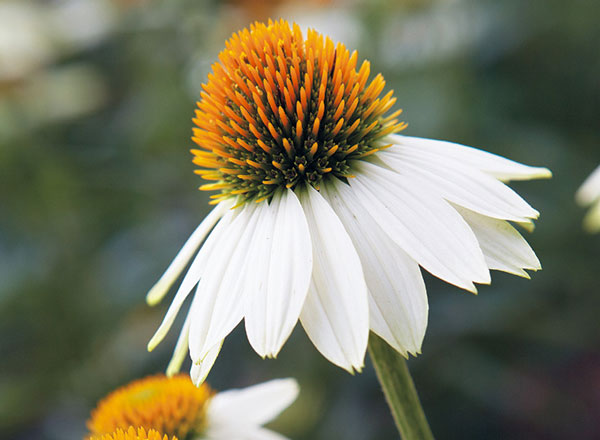
‘Tiki Torch' coneflower (Echinacea purpurea)
Blooms Large pumpkin-orange flowers; very sturdy plant Light Full sun to part shade Size 24 to 36 in. tall, 18 to 24 in. wide Hardiness Cold-hardy in USDA zones 3 to 9
‘Now Cheesier’ coneflower (Echinacea purpurea)
Blooms Golden-yellow single flowers Light Full sun to part shade Size 24 to 26 in. tall, 18 to 24 in. wide Hardiness Cold-hardy in USDA zones 3 to 9
‘Magnus’ coneflower (Echinacea purpurea)
Blooms Pink purple single flowers; traditional purple coneflower color and shape Light Full sun to part shade Size 30 to 36 in. tall, 12 to 18 in. wide Hardiness Cold-hardy in USDA zones 3 to 9
Latest Updated
- Benefits of Bugleweed - 7 Science-backed Health Benefits
- Bugleweed Dangers & Side Effects - Is It Poisonous?
- How to Plant Evergreen Trees - What You Should Know
- When to Plant Evergreens - Grow Guide for Evergreen Trees
- 12 Wonderful Evergreen Shrubs for Your Garden
- 12 Popular Evergreen Plants with Pictures for Beginners
- When And How To Prune A Lilac Bush Like a Pro
- How to Grow & Care for Lilac Vine (Hardenbergia Violacea)
- Japanese Lilac Tree (Syringa Reticulata) Care & Propagation Guide
- Shumard Oak Pros and Cons - What to Know
Popular Articles
- Winter maintenance of Antirrhinum Majus
- How to Grow Terminalia Mantaly Tree
- How to Grow and Care for Crossostephium Chinense
- How to grow Antirrhinum Majus in spring
- Peristeria Elata (Dove Orchid) Profile: Info & Care Guide
- Underwatered Snake Plant (Sansevieria Trifasciata) - Signs And How To Fix
- How to Care for Brazilian Jasmine Plant (Mandevilla Sanderi)
- How to Grow & Care for Graptopetalum Purple Delight in Summer
- Rosa Chinensis (China Rose): Plant Growing & Care Tips
- How to Care for Baby Sun Rose (Aptenia Cordifolia)